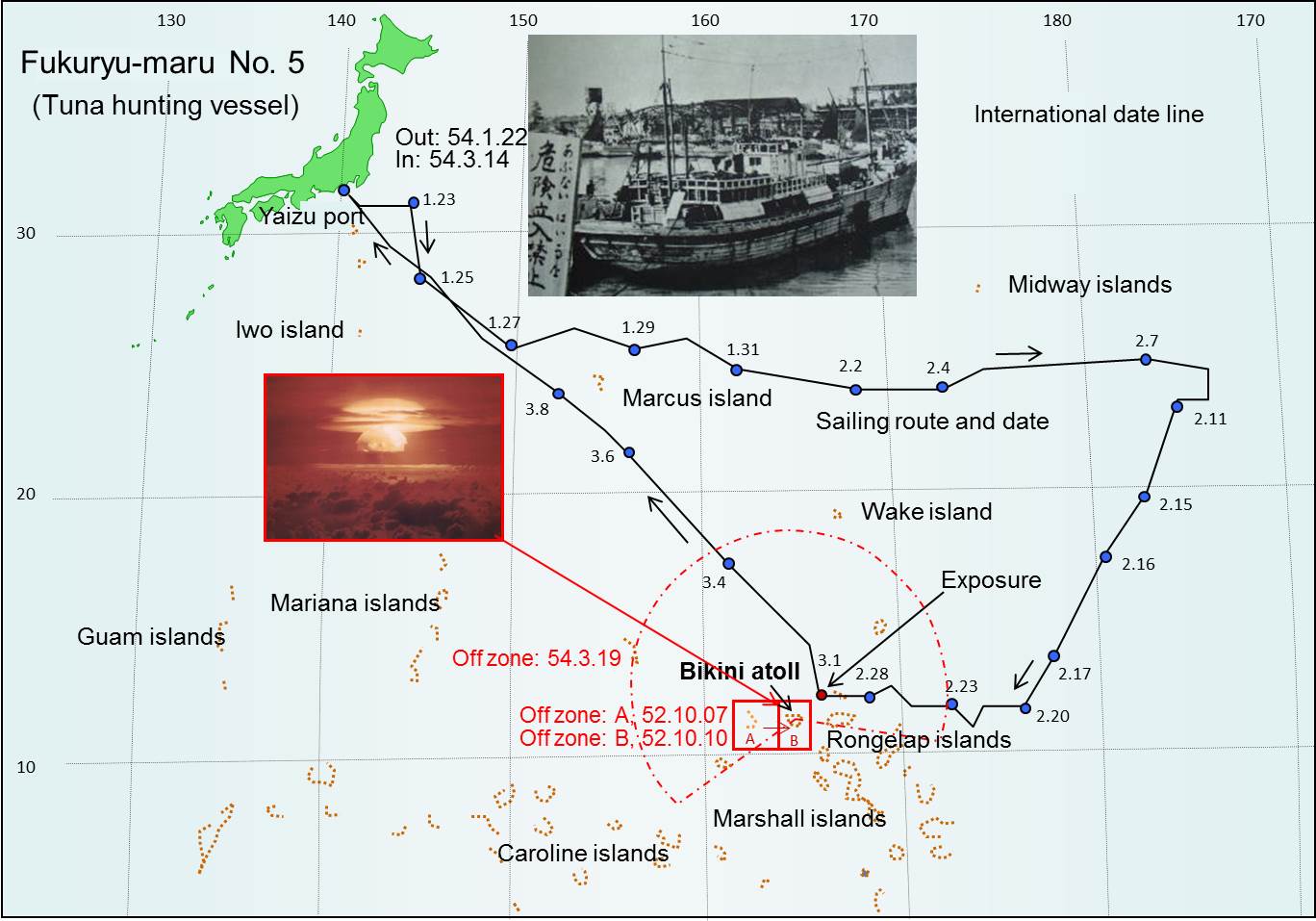On 1 March 1954, a thermonuclear test
explosion, called ‘Castle Bravo’ test, was performed by U.S. authority
at Bikini atoll in North Pacific Orcean. The explosion resulted in large
amount of radioactive fallout. In contrast to the predicted wind direction,
the fallout spread out to the northeast direction and resulted in moderate
to high level of radiation exposures to large number of people including
the native Marshallese (some 240 Marshallese living on Rongelap-, Sifo-,
Ailinginae- and Utrik-atolls) and 28 American military men on Rongerik-atoll.
At the time of explosion, Japanese tuna-hunting
vessel, ‘Fukuryu-maru No. 5’ (sometimes also called ‘No. 5 Lucky Dragon’), was fishing at about 160 km northeast of the hypocenter, where 23 fishermen
were suffered from the fallout for about 4.5 hrs. Without knowing the radioactivity
of the fallout, although they expressed nausea and vomiting, they returned
to the home port, Yaizu, on 14 March 1954, where the fallout was found
to be radioactive, in which more than 50% of radioactivity was that from
radioactive rare earth elements.
They were hospitalized in two hospitals in
Tokyo by 28 March 1954 (seven in the University of Tokyo Hospital, and
16 in the First National Hospital of Tokyo). One of the fishermen (KuAi)
died 23 September 1954. All the others were discharged from the hospitals
in May 1955. Since then, annual medical follow-up examinations, including
chromosome aberration examinations, have been performed. The follow-up
studies have been performed by Dr. Toshiyuki Kumatori and Dr. Takaaki Ishihara,
National Institute of Radiological Science, Chiba.
Dose reconstruction:
Dose to the fishermen for 14 days have been
estimated by (1) direct measurement of the fallout adhered to the body,
(2) fallout in the vessel and the behavior of the fishermen therein, and
(3) internal exposures by incorporated radionuclides as estimated from
the radioactivity in urine and thyroid, and supplementarily by the radioactivity
data in organs on the fatal case (KuAi).

